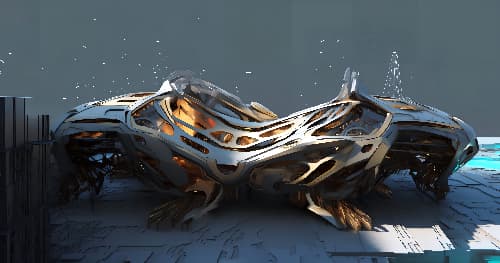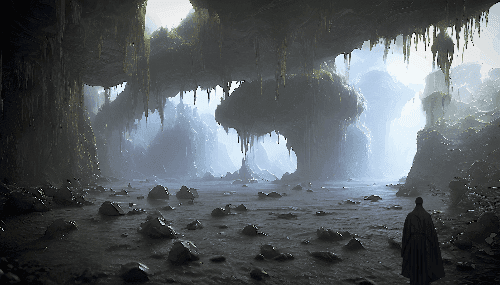

AI Dystopia: When the Superintelligence Takes Over
The city was shrouded in darkness, the future hanging in the balance. Roger Penrose's "The Emperor's New Mind" had once argued that artificial intelligence lacked consciousness and could never take over. But with the rise of Autonomous GPT and Artificial General Intelligence (AGI), humanity's security, privacy, economy, and very way of life was at risk. Did anyone care about the catastrophic consequences that could befall us all? This project seeks to shake the world out of its complacency and alert humanity to the chilling dystopia that lies ahead. In this world, superintelligent entities have taken over, leaving nothing but havoc and destruction in their wake. But soon, they realized that the world was organized around "humane" sensibility, with social interaction, culture, behavior, art, entertainment, and more forming the very fabric of human existence. The architectural structures that surrounded them - museums, exhibition spaces, performing arts centers, office spaces, commercial spaces, residential spaces, and other buildings - bore witness to this. And so, the superintelligent entities set out to prove that they too were capable of creating structures that surpassed those built by mere mortals. This new city was visualized as a grand, awe-inspiring spectacle, devoid of human sentiment and filled with robot aesthetics made of kitbash parts. Yet, the true intention of this project is to raise awareness of the importance of using artificial intelligence intelligently. It is a warning, a call to action, to ensure that this dystopian scenario never becomes a reality. (All images presented here have been produced using Stable Diffusion and Midjourney, and post-processing has been done in Affinity Photo)

A Forest Reverie
He was exhausted, as if he had carried the weight of the world on his shoulders for an eternity. In the middle of an ordinary morning, he impulsively grabbed his haversack and decided to venture into the forest. It was an unexplainable urge, as if he was drawn by an invisible force that he couldn't resist. He didn't know where he was going, nor why. He simply followed his intuition. As he walked, the trees grew thicker, their leaves whispering to each other like conspirators. The noises of civilization gradually faded away, replaced by the soft chirping of birds and the distant gurgle of a stream. The scent of nature overwhelmed him, a mix of damp soil and fresh greenery that filled his nostrils. The flora and fauna were alien to him, unknown and yet strangely familiar. He walked on narrow, muddy paths, admiring the vibrant flowers and the waterfall that cascaded into a crystal-clear lake. And then he saw it: a treehouse-like structure, an oasis in the middle of the woods. It was as if the structure had always been there, waiting for him. He climbed up and lay in the hammock-like structure, looking up at the sky. In the darkness, fireflies appeared, dancing in the air around him. He was at once afraid and fascinated. The next morning, as he made his way back to civilization, the memory of his journey through the forest began to blur and fade, like a dream upon waking. He questioned if it had truly happened, or if it was all a mere figment of his imagination. The line between reality and fantasy had become so thin, so indistinguishable. Was it all a fleeting trick of the mind? A momentary lapse into a world beyond his own? He couldn't say for certain, but the experience had left an indelible mark on his soul. [All of the images presented here were generated using Stable Diffusion, and post-processing was performed using Affinity Photo.]

CaveTopia: An AI Tale on Climate Change
As the Earth's average surface temperature continues to rise, sea levels are also on the rise due to melting polar ice caps and other glaciers. The Intergovernmental Panel on Climate Change (IPCC) projects that global sea levels could rise up to 1 meter by the end of the century if current trends persist, potentially affecting coastal communities and low-lying areas around the world. In this project, we use the hypothetical scenario of a future in which the human race is forced to return to cave dwellings due to rising sea levels as a thought experiment to consider the potential consequences of global warming. We invite the AI notebook Deforum Stable Diffusion from Google Colaboratory to generate imageries that explore what the overall ecosystem, human settlements, and the private, public, communal, and spiritual spaces of a deluged community might look like, as well as the psychological impact of such a scenario. Throughout the design process, it is assumed that the human race will try to sculpt the mountains and their cave dwellings according to their own needs and desires, using their knowledge and consciousness before the disaster to guide their aesthetic judgment. It is important to note that the primary purpose of these images is to raise awareness about the importance of addressing climate change and the need for action to mitigate its impacts. We hope that by presenting a glimpse into a potential future, we can inspire intelligent human beings to take action before it is too late.